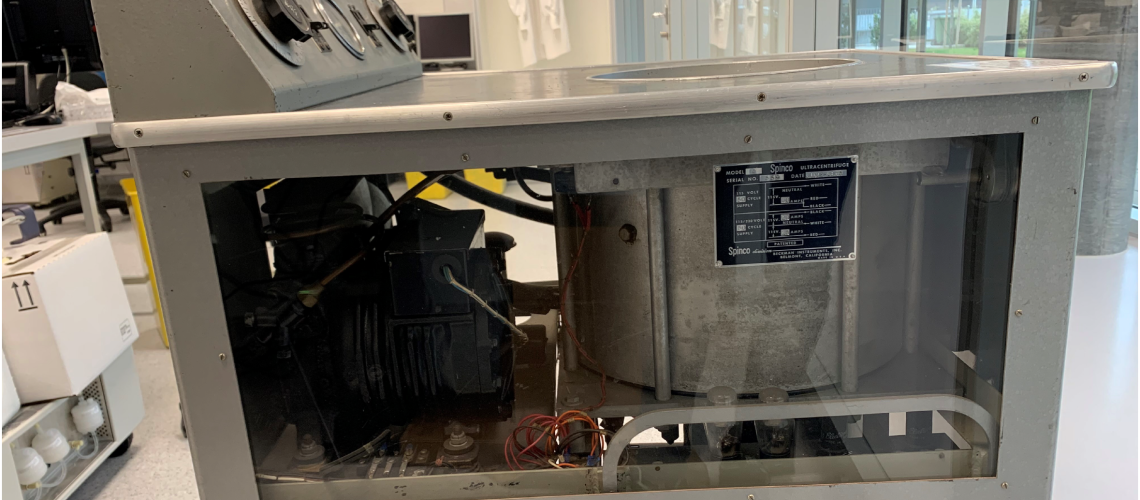Background
Theodor Svedberg (1884 –1971), a Swedish chemist and Nobel laureate, developed in the 1920ies analytical ultracentrifugation to separate molecules (proteins). In 1942 the physicist Edward Pickels refined the design of the ultracentrifuge. He developed the paradigm that ultracentrifuges must run under high vacuum to reduce the friction at the rotor surface, hence diminishing the torque on the rotor. The vacuum allows for high-speed revolutions required to achieve high gravitation fields for separation. Edward Pickels founded a new company named “Specialized Instrument Company (SPINCO)”, which became later (1955) a division of Beckman.
History
The exposed ultracentrifuge model is an original SPINCO L built in 1955 with a serial number 554. The Theodor-Kocher-Institute of the University of Bern purchased the instrument together with an analytical ultracentrifuge SPINCO E. The SPINCO L was in use until the late 80ties at the Theodor-Kocher-Institute. The ultracentrifuge was used to separate immune cell organelles. When the IRB opened in 2000 in Bellinzona, the centrifuge was donated by Prof. Marco Baggiolini for exhibition.
Instrument
The ultracentrifuge consists of a rotor chamber to which high vacuum is applied via a rotary vane pump, a compressor for refrigeration and a motor that can run up to a maximum of 40’000 rpm. Depending on the rotor dimensions the ultracentrifuge could achieve a gravitation field of up to 120’000 x g (g stands for gravitational constant given by the gravity of Earth: 9.80665 m/s2), meaning that 1 mg will have an apparent weight of 120 gram during centrifugation. It was therefore extremely critical that the centrifuge loading was precisely balanced. For safety reasons, the first instruments were tested outdoors.
Rotor
The rotor a fixed angle Ti70 (still in commerce) is a Titanium rotor with maximum revolutions of 70’000 rpm (revolutions per minute). Titanium was/is used because the metal is resistant to corrosions, an important property to maintain rotor balance. The rotor maximum radius is about 0.1 m, hence the circumference is (2 r) is ~ 0.63m. At 70’000 rpm the speed at the rotor edge is 0.63m x 70’000 x 60 = 2’400km/h. This high speed requires a vacuum to reduce torque and warming up of the rotor. Typically, in the SPINCO L the rotor was used at 40’000 rpm for 1 hour to achieve 100’000 x g hour, a definition for obtaining a cleared cytosol, free of organelles and cytoskeleton.









